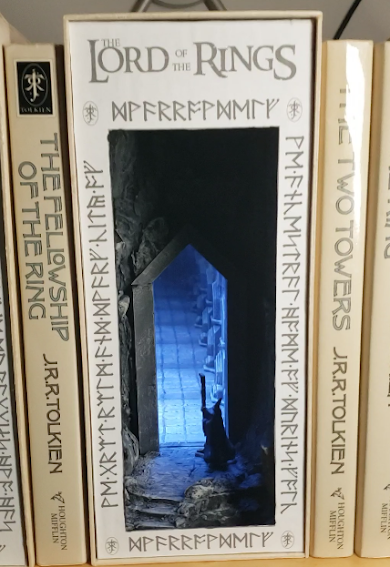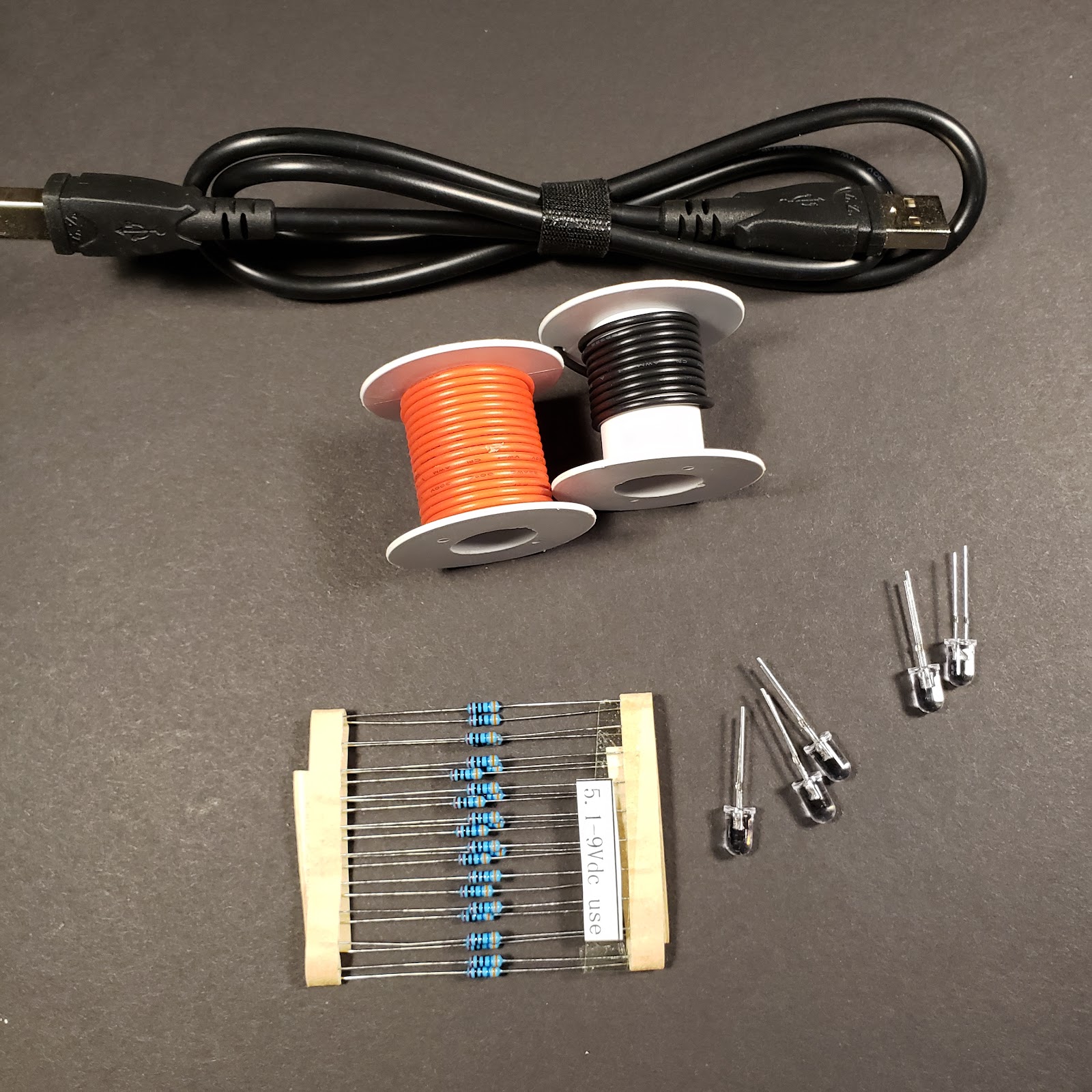Build Summary
The Dwarrowdelf Booknook is a design emulating the vastness of the dwarven hall with the use of an infinity mirror. In my original design, I placed a single dwarven pillar in the center of the mirror box. I have since updated that design to use a quarter pillar in each corner resulting in a more open hall.
My complaints about the prior design are documented here. This update is now similar to this nook on YouTube ("How to Build a Mines of Moria Infinity Box Book Nook"), but you will note that the design without the terrain in front means the effect is very poorly behaved in daytime and the glamour shots are all in the dark. This new model takes the best aspects of both designs.
Mirror Box Construction
For my mirror box, I ordered some Custom 2-Way 1/8 inch thick Acrylic Mirror pieces from SpeedyOrders. I had to get a quote for my custom size which was 8"x3.125". Thinking back on this, I really only needed one two way mirror. The other three could have been so called "first surface mirrors" instead. And with these the build might have been better.
Also note that I cannot personally highly recommend Speedy Orders. I feel they overcharged for my custom pieces. However, they are a real company and actually delivered a good product.
Also note that I cannot personally highly recommend Speedy Orders. I feel they overcharged for my custom pieces. However, they are a real company and actually delivered a good product.
2 way mirrors are not great mirrors. And I really only needed one two way mirror. To improve the performance of the other three mirrors, I identified the "first surface" side of the mirror and spray painted the back side of three of them black. This will prevent any light behind the nook from leaking through and spoiling the effect.
Then the pieces were taped together with gorilla tape, forming a hinge. In this configuration, each 1/8" thick mirror edge rest against its neighbor so that 3 inches of each the mirror surface is visible on the inside of the box.
Mirror box showing black backsides and tape hinges
Mirror Box interior (Dwarven Pillar)
The selection of the dwarven pillar, cutting and 3D printing is already documented here.
To summarize, this model was purchased and cut into a single quarter piece (in Blender) and 4 parts printed.
The next step was filling some gaps (which could have been done digitally).
and painting.
- Spray paint flat black
- Craftsmart Black to fill any spots
- Craftsmart Dark gray over most surfaces
- Craftsmart Light gray edge highlights (use the side of the brush) Note: DO NOT highlight the edge of the pillar where it was cut in quarters as this will look silly when reflected in the mirror.
The next step involves adhering the quarter pillars inside the mirror box. I made a small test and found that super glue would hold my pillars in place. There is much risk here as super glue (common CA glue) could have just torn the front surface of the mirror off! luckily we do not need all of the mirror surface and only applying glue towards the edge of the mirror had low risk of ruining the project. After a few seconds the pillars were suck fast.
Unfolding the box, each pillar was aligned with the straight edge, at an offset matching the thickness of my floor foam.
Quarter pillars glued to each mirror
The floor piece is a 3"x3" square piece of foam with 1/2" tiles cut into it and painted in the same style as the pillars (do not use spray paint on foam). When folding the mirror box back together, I super glued two of the corners together to tightly close some larger gaps.
Final assembly
Illusion test
Mirror Box lighting
The two way mirror appears as a normal mirror when the light on the outside is brighter than the inside and lets the observer see inside when the light levels are similar or brighter on the inside. The mirror box will need to be recessed and shaded, and the light inside will need to be strong to overpower any bright exterior reflections. This is going to take a lot of light, so I installed 9 full size LEDs in the ceiling piece of the box.
Each LED is held in place inside a hole (created with a pencil) by hot glue. Each LED has its own resistor and I have become very quick with the soldiering iron, so this is not much work / a problem and I have found that this configuration has advantages for longevity of the system.
With these LEDs and USB power it looks quite bright.
Nook Terrain
The terrain inside the nook was made in usual way with a dollar store foam core box and scraps of XPS foam. For tutorials on building miniature terrain lookup Black Magic Craft on YouTube and checkout the earliest videos. The stairs were carved out using a hobby knife, the wall texture achieved with latex caulk and small stones and rubble are real sand adhered with PVA glue. The same color scheme was applied here as well.
The rear of the box is ready to receive the mirror box.
Box rear (note the lights wired here are not used)
Box and Front Plate
The outer shell is constructed from thin sheets of basswood. I use wood glue to affix the wood to the foam core and will gently stack a few books or clamp it while drying. I mounting the top piece first, then the sides and I try not to worry too much about the precision of the fit on the bottom. The pieces are all over-sized (except the bottom) and I use a small orbital sander to quickly make everything flush. If you were to measure really well, you could easily sand it flush by hand instead.
The front plate was done in Inkscape (svg or pdf) using a somewhat odd box size frame. I made my first LOTR nook in this size and must therefore continue. The aspect ratio is pleasing and has worked well so far. Note: To view the SVG or make edits you will need the free fonts (free for personal use) Ringbearer and Cirth-Erebor.
Gandalf
This 1980's 25mm Ral Partha miniature is a great substitute for Gandalf and I happened to already have it. You can still buy this from IronWind as Mage 03-041. But honestly 1 in 10 mage models is passable for Gandalf and you should be able to make anything work.
















































